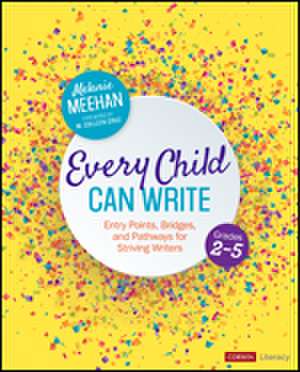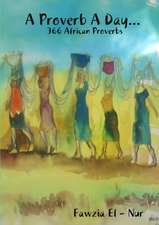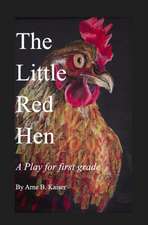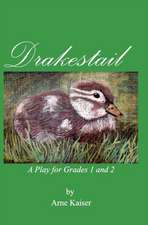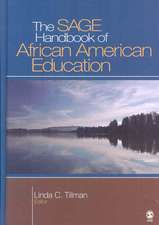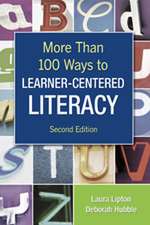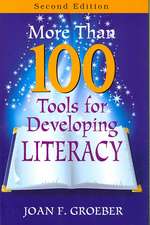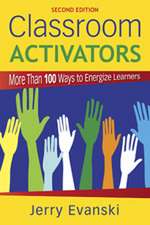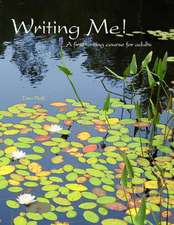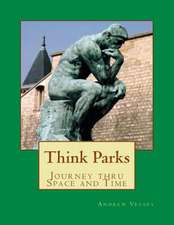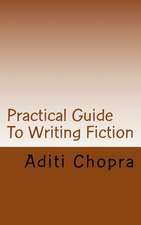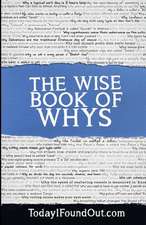Every Child Can Write, Grades 2-5: Entry Points, Bridges, and Pathways for Striving Writers: Corwin Literacy
Autor Melanie Meehanen Limba Engleză Paperback – 31 dec 2019
Empowering striving writers to thrive as writers!
When we think of students who have faced instructional challenges as striving writers, their path to success becomes clearer. It may not be the same path their classmates travel, but with you as their guide, they will reach their goal. This book, filled with practical strategies, classroom-management ideas, reproducible tools, as well as low and high-tech solutions for increasing output and boosting self esteem will also help you:
· Implement principles of UDL to optimize your classroom environment and student learning;
· Identify and honor students¿ strengths throughout your writing instruction;
· Maximize the power of formative assessment to set goals with students
· Integrate the most appropriate technology that empowers students and leads them to independence
Din seria Corwin Literacy
-
 Preț: 285.18 lei
Preț: 285.18 lei -
 Preț: 158.08 lei
Preț: 158.08 lei -
 Preț: 278.41 lei
Preț: 278.41 lei -
 Preț: 243.82 lei
Preț: 243.82 lei -
 Preț: 244.25 lei
Preț: 244.25 lei -
 Preț: 88.42 lei
Preț: 88.42 lei -
 Preț: 273.64 lei
Preț: 273.64 lei -
 Preț: 274.70 lei
Preț: 274.70 lei -
 Preț: 200.92 lei
Preț: 200.92 lei -
 Preț: 248.27 lei
Preț: 248.27 lei -
 Preț: 284.26 lei
Preț: 284.26 lei -
 Preț: 294.79 lei
Preț: 294.79 lei -
 Preț: 281.36 lei
Preț: 281.36 lei -
![Mindsets and Moves: Strategies That Help Readers Take Charge [Grades K-8]](https://i3.books-express.ro/bs/9781506314938/mindsets-and-moves.jpg) Preț: 156.17 lei
Preț: 156.17 lei -
 Preț: 283.27 lei
Preț: 283.27 lei -
 Preț: 88.42 lei
Preț: 88.42 lei -
 Preț: 281.95 lei
Preț: 281.95 lei -
 Preț: 248.27 lei
Preț: 248.27 lei -
 Preț: 278.66 lei
Preț: 278.66 lei -
 Preț: 276.91 lei
Preț: 276.91 lei -
 Preț: 237.15 lei
Preț: 237.15 lei -
 Preț: 270.76 lei
Preț: 270.76 lei -
![Comprehension [Grades K-12]: The Skill, Will, and Thrill of Reading](https://i3.books-express.ro/bs/9781071812839/comprehension-grades-k-12.jpg) Preț: 287.79 lei
Preț: 287.79 lei -
 Preț: 278.11 lei
Preț: 278.11 lei -
 Preț: 245.45 lei
Preț: 245.45 lei -
 Preț: 204.27 lei
Preț: 204.27 lei -
 Preț: 272.62 lei
Preț: 272.62 lei -
![Every Minute Matters [Grades K-5]: 40+ Activities for Literacy-Rich Classroom Transitions](https://i4.books-express.ro/bs/9781544382449/every-minute-matters-grades-k-5.jpg) Preț: 193.61 lei
Preț: 193.61 lei -
 Preț: 274.00 lei
Preț: 274.00 lei -
![Flash Feedback [Grades 6-12]: Responding to Student Writing Better and Faster – Without Burning Out](https://i4.books-express.ro/bs/9781544360492/flash-feedback-grades-6-12.jpg) Preț: 232.71 lei
Preț: 232.71 lei -
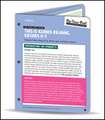 Preț: 88.67 lei
Preț: 88.67 lei -
 Preț: 147.92 lei
Preț: 147.92 lei -
 Preț: 273.44 lei
Preț: 273.44 lei -
 Preț: 245.73 lei
Preț: 245.73 lei -
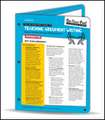 Preț: 88.67 lei
Preț: 88.67 lei -
 Preț: 236.13 lei
Preț: 236.13 lei -
 Preț: 256.83 lei
Preț: 256.83 lei -
 Preț: 291.05 lei
Preț: 291.05 lei -
 Preț: 288.67 lei
Preț: 288.67 lei -
 Preț: 273.44 lei
Preț: 273.44 lei -
 Preț: 278.11 lei
Preț: 278.11 lei -
 Preț: 244.08 lei
Preț: 244.08 lei -
 Preț: 244.45 lei
Preț: 244.45 lei -
![Mentor Texts That Multitask [Grades K-8]: A Less-Is-More Approach to Integrated Literacy Instruction](https://i3.books-express.ro/bs/9781071836132/mentor-texts-that-multitask-grades-k-8.jpg) Preț: 241.23 lei
Preț: 241.23 lei -
 Preț: 140.62 lei
Preț: 140.62 lei -
 Preț: 216.22 lei
Preț: 216.22 lei -
 Preț: 218.84 lei
Preț: 218.84 lei -
 Preț: 289.03 lei
Preț: 289.03 lei -
 Preț: 273.44 lei
Preț: 273.44 lei
Preț: 209.16 lei
Nou
40.03€ • 43.46$ • 33.62£
Carte disponibilă
Livrare economică 01-15 aprilie
Livrare express 15-21 martie pentru 30.91 lei
Specificații
ISBN-10: 1544355076
Pagini: 272
Dimensiuni: 187 x 232 x 20 mm
Greutate: 0.54 kg
Ediția:First Edition
Editura: SAGE Publications
Colecția Corwin
Seria Corwin Literacy
Locul publicării:Thousand Oaks, United States
Cuprins
Acknowledgments
About the Author
Introduction
Why Our Work Matters
Entry Points, Bridges, and Pathways
How This Book Is Organized and What I Hope You’ll Gain From Reading It
PART 1: CREATING A PRODUCTIVE ENVIRONMENT
Chapter 1: Come In and Look Around!
How does the classroom environment support our writers who face instructional obstacles?
Our striving writers benefit from an organized environment, and they need routines in order to maintain that organization.
Our classroom’s spaces should contain only materials that foster student learning and independence.
The more we create, provide, and encourage the use of tools for independence and repertoire, the more learning will happen in our classrooms.
Chapter 2: Listen, Learn, and Then Go Write!
How can we set up classroom management and routines to support learning and independent writing?
Transitions work best when everyone, especially striving writers, gets to where they belong during instruction and independent writing time.
In order for instruction to be effective, students must not only listen to it, they must also understand it.
Independent writing time should involve independently writing.
PART 2: FINDING ENTRY POINTS AND BUILDING BRIDGES
Chapter 3: Find the Place Where Writers Can Join the Work
How can we provide entry points so all writers get to experience success within the writing process?
We can use what we know about standards and progressions of writing to help students grow their ZPD along the continuum of mastery.
When we determine where and how students get stuck in their process, we can help them find the right entry point.
We empower students and engage them in their development as writers by teaching them to self-assess their process—and progress.
Chapter 4: Construct Bridges for Writers to Join the Journey
How can we change the steps and the process so that all writers can participate and produce?
Even though choice is a critical feature in many writing classes, sometimes we need to remove choice in order to provide temporary scaffolds that get students writing.
The bridges we provide our striving writers may need to be placed in different parts of the process.
Sometimes isolating skills is an effective way to improve overall performance.
PART 3: PROVIDING PATHWAYS
Chapter 5: The Power of Paper—Don’t Underestimate It!
How can we leverage paper choice to inspire our writers who face instructional obstacles?
Paper has the power to communicate what is important—neatness or content?
Paper choice communicates our expectations and helps students set expectations for themselves.
Paper can be one of your most powerful scaffolds for focus and organization.
Chapter 6: Co-Create Classroom Charts as Pathways Toward Independence
How can we use charts to develop students’ independence within our writing classrooms?
It’s important to be confident about the types and purposes of various charts.
Quick-Reference Guide to Classroom Charts
We need to address what gets in the way of relevant, responsive charts—and know what we can do about it.
More than anything else, classroom charts are there for students to use.
Chapter 7: Venture Forth on Higher-Tech Pathways . . . With Intention and Forethought
How can we leverage technology to find entry points and build bridges or pathways for our writers who face instructional obstacles?
Technology has the power to impact students, and it has the power to impact teachers.
Technology enables us to provide access to students so that tools, charts, and other resources can be easily accessed at points in the process where and when students need them.
It’s important to pay attention to the reason we are using any digital device, modification, or tool with students—and make sure it fits a student’s needs.
Chapter 8: Spelling and Conventions—The Pitfalls and Potholes Along the Trail
How can we address the skills involved with spelling and conventions while not losing momentum with the overall writing process?
Striving writers—no, all writers—need to see conventions and spelling done correctly.
As we teach the transcriptive elements of spelling and punctuation, our instruction must be within students’ realm of possibility and transference—within their ZPD.
We can improve correct usage by finding ways to embed conventions across the day, increasing the level of intention, and infusing elements of play during students’ independent writing time.
Chapter 9: Every Child Can Write—A Case Study
What does it look like in a real classroom when we merge entry points, bridges, and pathways?
Increasing Volume as a Crucial First Step
Establishing Routines
Providing Charts for Independence
Finding Different Entry Points
Building Independence for All
Expanding Paper Choice
Assessing Engagement
Reflecting on Student Growth and Making Adjustments
Every Child Can Write: Getting Closer to Our Goals
Appendix
A. Favorite Mentor Texts for Writing Instruction
Narrative
Information
Opinion
B. Mentor Text Charts With Craft Moves
Narrative
Information
Opinion
C. Sample of Progressions
Creating a Beginning for a Narrative Story
Creating an Ending for a Narrative Story
A Sample of a Progression of a Narrative Beginning Using Stars
A Progression of Narrative Elaboration
Introduction Progression for Information Writing
Conclusion Progression for Information Writing
D. Samples of Task Analyses
Sample Task Analyses for Narrative Story, Research-Based Essay, Information Writing
Classroom Example: Narrative Story
Classroom Example: Information Book
E. Anchor Charts
Narrative Writing Anchor Chart Sequence
Information Writing Anchor Chart Sequence
F. Writing Standards
Narrative Writing Standards
Information Writing Standards
Opinion Writing Standards
G. Convention Station Samples
Periods and Capitals
Capitals
Commas
Tricky Words
References
Index
Notă biografică
Melanie Meehan has been the Elementary Writing and Social Studies Coordinator in Simsbury, Connecticut, since 2012. Within that position, she writes curriculum, works with teachers, and strives to send students off into the world as confident writers who love to express their ideas. Melanie is a co-author of Two Writing Teachers, a blog dedicated to the teaching of writing, as well as a regular contributor to Choice and Lead Literacy. She wrote Every Child Can Write, which was published by Corwin Press in October 2019, and she co-authored The Responsive Writing Teacher with Kelsey Sorum, which was published in 2021. You can reach Melanie on Twitter, @MelanieMeehan1.
Descriere
When we think of students who have faced instructional challenges as striving writers, their path to success becomes clearer. It may not be the same path their classmates travel, but with you as their guide, they will reach their goal. This book, filled with practical strategies, classroom-management ideas, reproducible tools, as well as low and high-tech solutions for increasing output and boosting self esteem will also help you:
· Implement principles of UDL to optimize your classroom environment and student learning;
· Identify and honor students’ strengths throughout your writing instruction;
· Maximize the power of formative assessment to set goals with students
· Integrate the most appropriate technology that empowers students and leads them to independence
